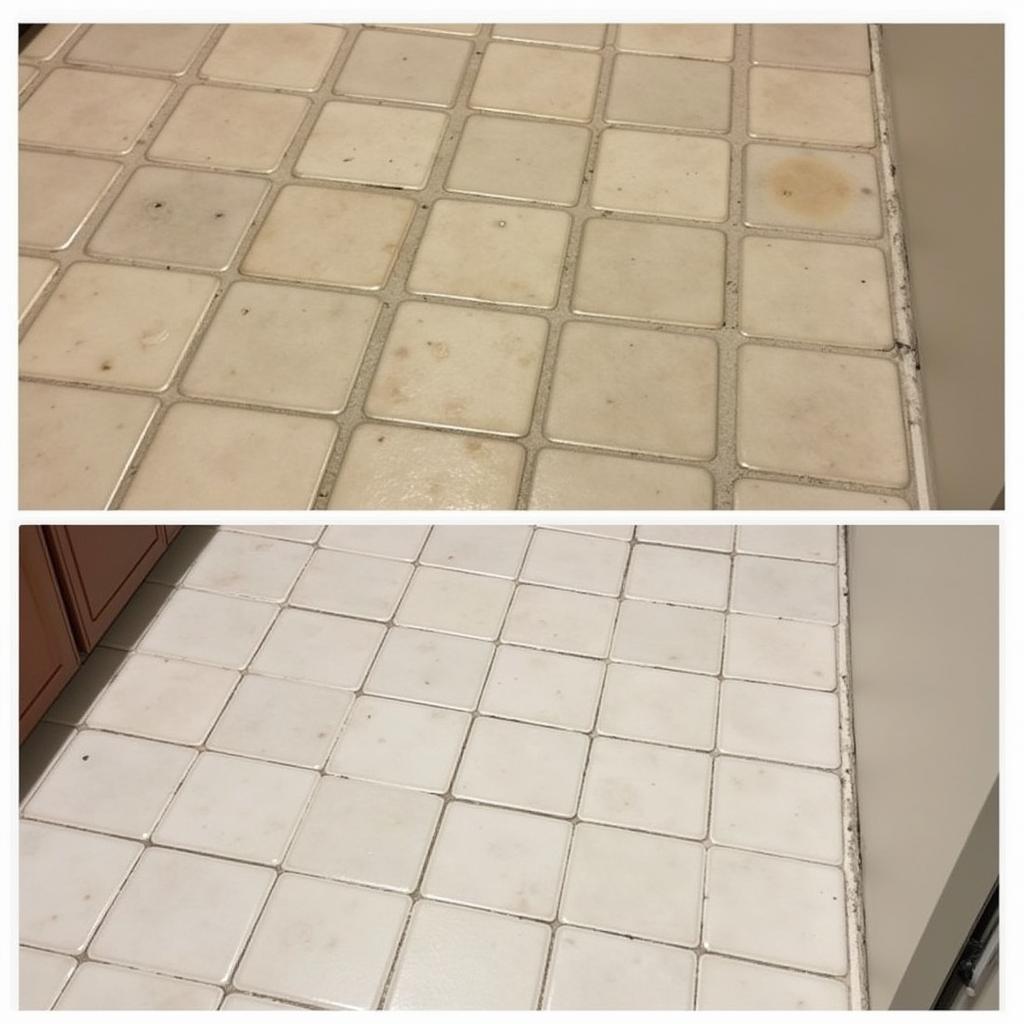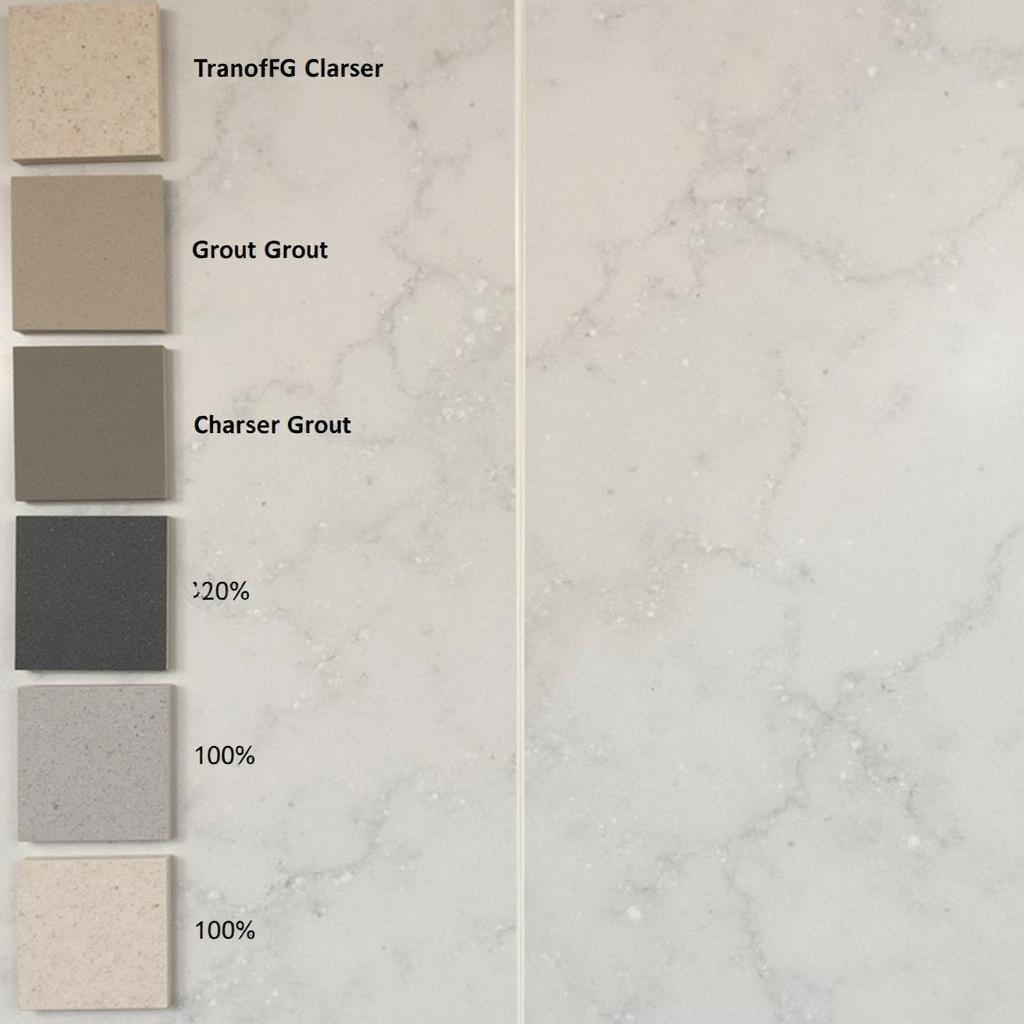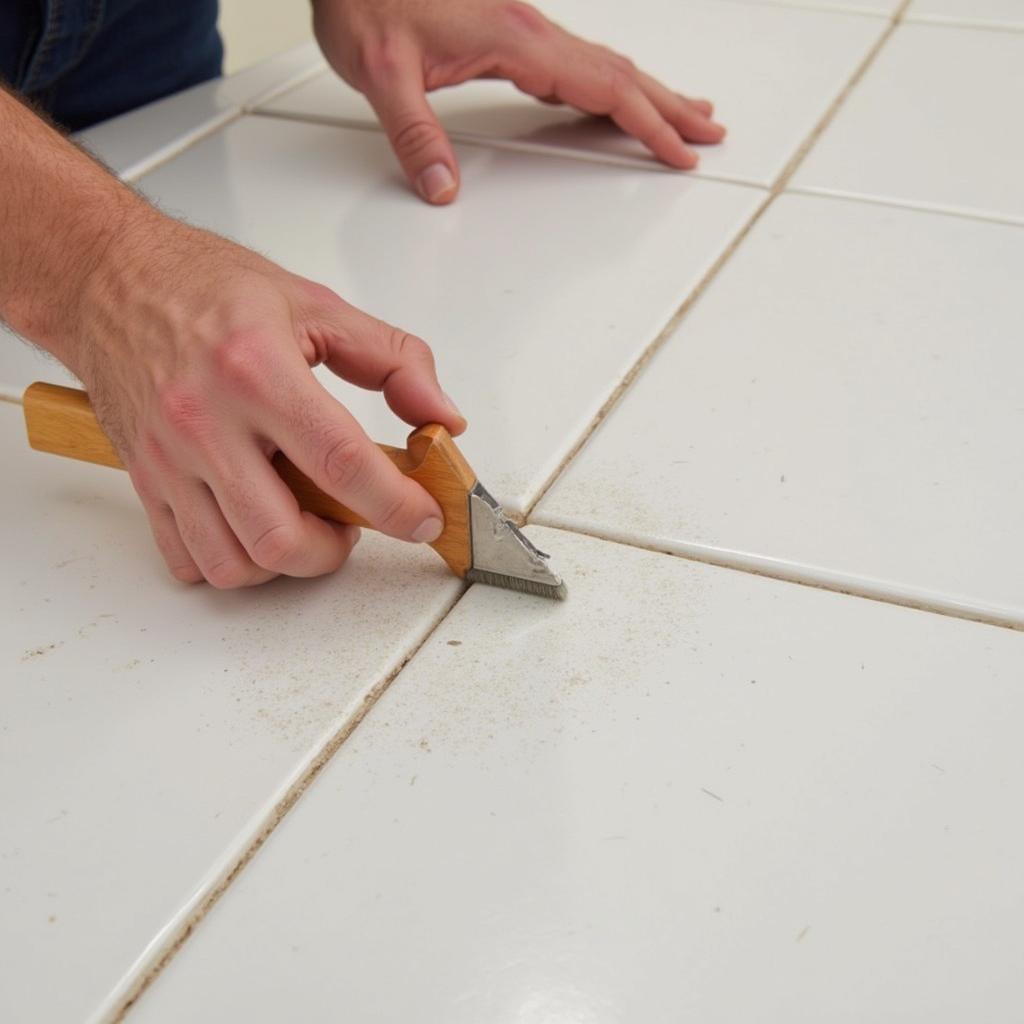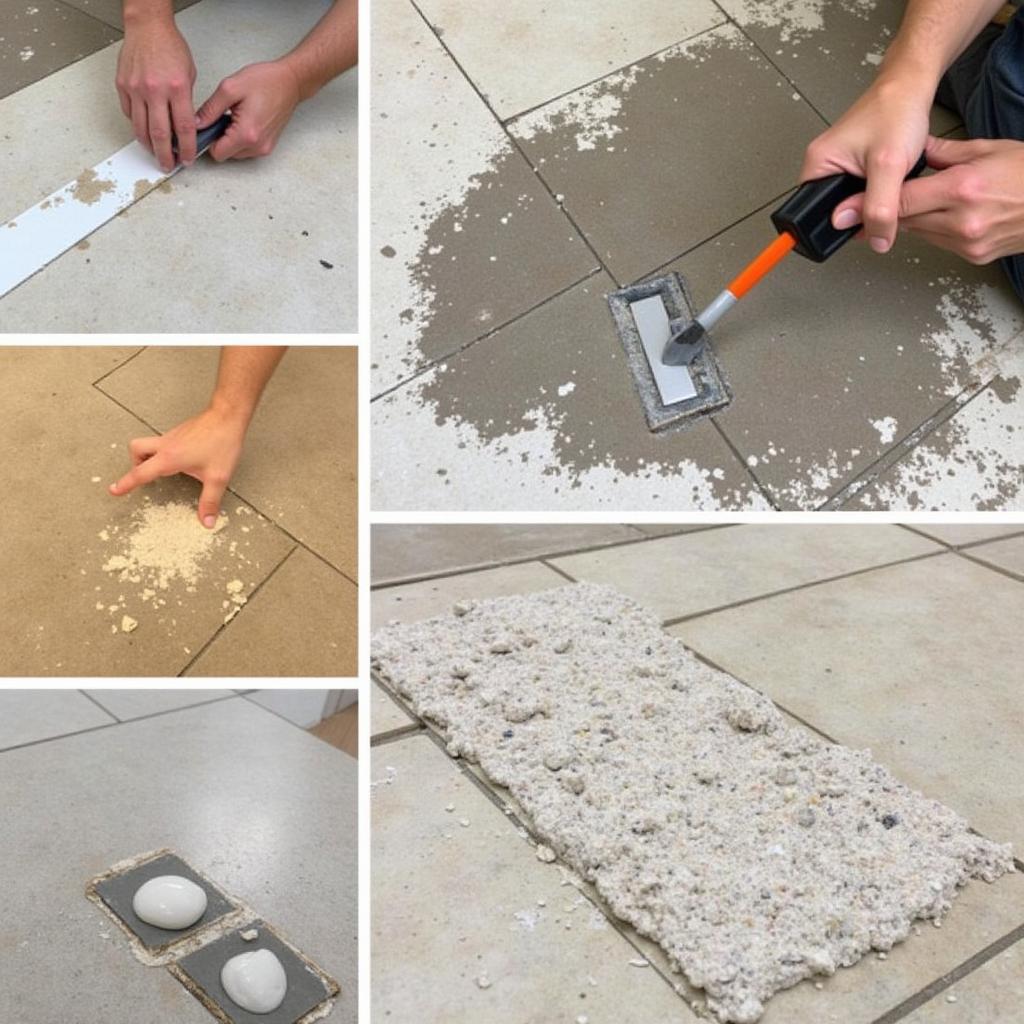Want to refresh your tiled surfaces without the hassle of a full renovation? Changing the grout color can make a dramatic difference! Whether your grout is stained, outdated, or you simply crave a new look, this comprehensive guide will walk you through everything you need to know about changing grout color, from choosing the right shade to achieving professional-looking results.
Why Change Your Grout Color?
Grout might seem like a minor detail, but it plays a significant role in the overall aesthetic of your tiled surfaces.  Before & after grout color change – dramatic transformation Here’s how changing your grout color can transform your space:
Before & after grout color change – dramatic transformation Here’s how changing your grout color can transform your space:
- Modernize dated tiles: Breathe new life into old or outdated tiles by simply updating the grout color. A fresh grout color can completely change the look and feel of a room.
- Conceal stains and discoloration: Grout is porous and easily absorbs dirt, grime, and stains over time. Changing its color can effectively hide imperfections and make your surfaces look clean and new again.
- Highlight tile patterns and designs: The right grout color can make intricate tile patterns pop or create a subtle, cohesive look with plain tiles.
- Update your décor style: Whether you’re transitioning to a modern farmhouse look or embracing minimalist vibes, changing the grout color is an easy way to complement your evolving style.
Choosing the Right Grout Color
 Choosing the right grout color from samples
Choosing the right grout color from samples
Selecting the right grout color is crucial for achieving your desired outcome. Here’s what to consider:
1. Tile Color and Style:
- Contrasting Grout: For a bold and dramatic look, choose a grout color that strongly contrasts with your tile color. For example, black grout with white subway tiles creates a striking, graphic effect.
- Complementary Grout: If you prefer a more subtle and harmonious look, select a grout color that complements the undertones of your tiles. For instance, a warm gray grout pairs beautifully with beige or cream tiles.
- Matching Grout: Matching the grout color to your tiles creates a seamless and unified look, making the tiles appear larger. This is particularly effective for small spaces or when using bold patterned tiles.
2. Room Size and Lighting:
- Light Grout Colors: Light grout colors, like white or cream, can make a room feel more spacious and airy. They are an excellent choice for small bathrooms or kitchens.
- Dark Grout Colors: Darker grout colors can create a cozy and intimate atmosphere. However, they can also make a space feel smaller, so it’s best to use them in well-lit rooms.
3. Your Personal Style:
Ultimately, the best grout color is the one that resonates with your style and complements your overall design aesthetic. Don’t be afraid to experiment with different options and choose a color that brings you joy.
Methods for Changing Grout Color
Now that you’ve chosen your ideal grout color, let’s explore the different methods for changing your grout:
1. Grout Stain:
 Applying grout stain with a brush
Applying grout stain with a brush
Grout stain is a popular choice for DIYers as it’s relatively easy to apply and offers a budget-friendly solution. Here’s how to use it:
- Clean the grout thoroughly: Use a grout cleaner and a stiff brush to remove dirt, grime, and any existing sealant.
- Apply the grout stain: Use a grout stain applicator brush to apply the stain evenly to the grout lines.
- Remove excess stain: Wipe away any excess stain from the tile surface immediately using a damp cloth.
- Let it dry: Allow the grout stain to dry completely according to the manufacturer’s instructions.
- Apply a sealant (optional): For added protection and longevity, consider applying a grout sealant once the stain is dry.
Pros:
- Easy to apply
- Affordable
- Available in a wide range of colors
Cons:
- May not completely cover dark or heavily stained grout
- Can fade or discolor over time, especially in high-traffic areas
2. Grout Colorant:
Grout colorant is a more durable and long-lasting option compared to grout stain. It’s a specialized epoxy-based coating that bonds permanently to the existing grout.
Application typically involves:
- Professional cleaning: Thorough cleaning and preparation of the grout lines.
- Colorant application: Application of the colorant using specialized tools for even coverage.
- Sealing: Application of a sealant for enhanced protection and stain resistance.
Pros:
- Highly durable and long-lasting
- Resistant to stains, fading, and discoloration
- Provides a professional-looking finish
Cons:
- More expensive than grout stain
- Often requires professional installation
3. Grout Removal and Replacement:
 Removing old grout with a grout removal tool
Removing old grout with a grout removal tool
If your grout is severely damaged, crumbling, or you’re looking for a completely fresh start, grout removal and replacement is the most effective solution.
This process involves:
- Removing the old grout: Using a grout removal tool to carefully remove the existing grout.
- Cleaning the grout joints: Thoroughly cleaning the grout joints to remove any debris.
- Applying new grout: Applying new grout to the joints using a grout float.
- Cleaning and sealing: Cleaning excess grout and applying a sealant once the grout has cured.
Pros:
- Provides a completely new and fresh look
- Allows for complete color and style changes
- Solves issues with damaged or deteriorated grout
Cons:
- Most labor-intensive and time-consuming method
- Can be messy and disruptive
- Often requires professional installation
Tips for Successful Grout Color Change
- Test before you commit: Always test your chosen grout color on a small, inconspicuous area before applying it to the entire surface. This will give you a better idea of how the color looks against your tiles and in your lighting conditions.
- Clean thoroughly: Properly cleaning the grout lines is crucial for achieving optimal results.
- Use painter’s tape: Protect your tiles from stains by applying painter’s tape along the edges of the grout lines.
- Work in small sections: Applying grout stain or colorant in small, manageable sections can help ensure even coverage.
- Don’t rush the process: Allow ample drying time between coats and before applying any sealant.
Conclusion
Changing your grout color is a fantastic way to revitalize your tiled surfaces and elevate your home décor. Whether you opt for a subtle refresh with grout stain or a complete transformation with grout removal and replacement, the right grout color can make a world of difference. By carefully considering your options and following these expert tips, you can achieve professional-looking results and enjoy your beautiful, refreshed tilework for years to come!
FAQs
1. Can I change the color of epoxy grout?
Epoxy grout is highly resistant to stains and traditional coloring methods. If you need to change the color of epoxy grout, it’s best to consult a professional for specialized solutions.
2. How long does grout stain last?
The longevity of grout stain depends on factors like foot traffic, cleaning products used, and the quality of the stain itself. Typically, grout stain can last anywhere from a few months to a few years.
3. Do I need to seal my grout after changing the color?
Sealing your grout is highly recommended as it helps protect it from stains, moisture, and discoloration, prolonging the life of your grout and maintaining its fresh appearance.
4. Can I change the color of grout myself, or should I hire a professional?
While some grout color-changing methods like applying grout stain are DIY-friendly, more complex tasks like grout removal and replacement often require professional expertise for optimal results.
5. How do I choose the right grout color for my backsplash?
Consider the color and style of your backsplash tiles, the overall kitchen décor, and the desired effect. You can opt for a contrasting grout color for a bold statement or a complementary grout color for a more harmonious look. how to choose grout color for backsplash
Need Help Transforming Your Grout?
Contact Color Box Hanoi today! Our team of color experts and skilled technicians are here to guide you through the process and deliver exceptional results. Call us at 0373298888, email us at [email protected], or visit our showroom at 86 Cầu Giấy, Hà Nội. We offer free consultations and 24/7 customer support!

